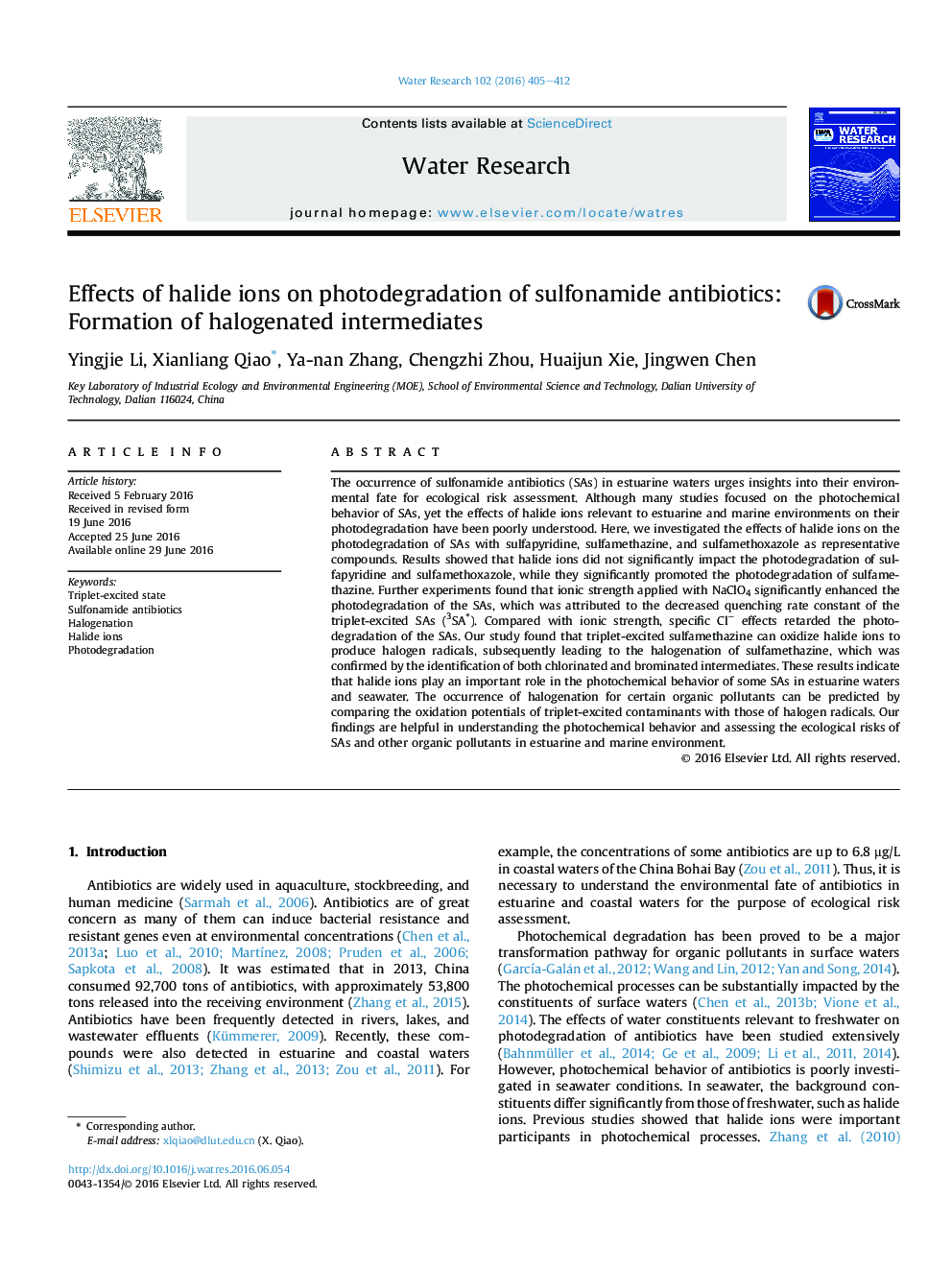| Article ID | Journal | Published Year | Pages | File Type |
|---|---|---|---|---|
| 4480870 | Water Research | 2016 | 8 Pages |
•Halide ions pose special promotion in the photolysis of sulfamethazine.•Photolytic rate of sulfamethazine is higher in seawater than that in freshwater.•Triplet-excited sulfamethazine can react with Cl− and Br− ions.•Halogenated intermediates of sulfamethazine were formed in seawater.•Halogenation reaction can be predicted based on oxidation potential.
The occurrence of sulfonamide antibiotics (SAs) in estuarine waters urges insights into their environmental fate for ecological risk assessment. Although many studies focused on the photochemical behavior of SAs, yet the effects of halide ions relevant to estuarine and marine environments on their photodegradation have been poorly understood. Here, we investigated the effects of halide ions on the photodegradation of SAs with sulfapyridine, sulfamethazine, and sulfamethoxazole as representative compounds. Results showed that halide ions did not significantly impact the photodegradation of sulfapyridine and sulfamethoxazole, while they significantly promoted the photodegradation of sulfamethazine. Further experiments found that ionic strength applied with NaClO4 significantly enhanced the photodegradation of the SAs, which was attributed to the decreased quenching rate constant of the triplet-excited SAs (3SA∗). Compared with ionic strength, specific Cl− effects retarded the photodegradation of the SAs. Our study found that triplet-excited sulfamethazine can oxidize halide ions to produce halogen radicals, subsequently leading to the halogenation of sulfamethazine, which was confirmed by the identification of both chlorinated and brominated intermediates. These results indicate that halide ions play an important role in the photochemical behavior of some SAs in estuarine waters and seawater. The occurrence of halogenation for certain organic pollutants can be predicted by comparing the oxidation potentials of triplet-excited contaminants with those of halogen radicals. Our findings are helpful in understanding the photochemical behavior and assessing the ecological risks of SAs and other organic pollutants in estuarine and marine environment.
Graphical abstractFigure optionsDownload full-size imageDownload high-quality image (277 K)Download as PowerPoint slide
